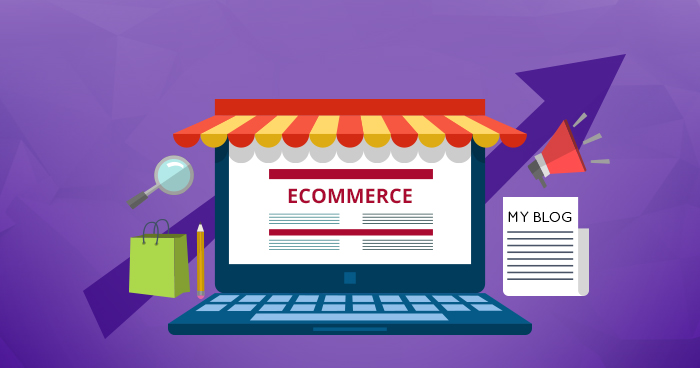Introduction
In today’s digital-first marketplace, e-commerce content marketing has become an indispensable tool for driving traffic, engaging customers, and increasing sales. With online shopping now the norm, businesses must go beyond just listing products—they need to tell stories, build trust, and offer value long before the checkout page. E-commerce content marketing is the strategic creation and distribution of content designed to attract, convert, and retain customers. Unlike traditional advertising, this approach is centered around meeting customer needs and providing helpful, relevant content throughout the buyer’s journey.
What Is E-Commerce Content Marketing?
E-commerce content marketing refers to the use of digital content to promote an online store and its products. It encompasses blog posts, product descriptions, email newsletters, videos, social media posts, infographics, buying guides, and more. The goal is not only to promote products but to educate, entertain, and inform potential customers. This strategy works by building trust and relationships with your audience, which ultimately drives them to make a purchase and become loyal brand advocates.

The Role Of Content In The E-Commerce Funnel
Every e-commerce business operates within a sales funnel: from awareness and interest to decision and action. Content is the glue that holds each stage of this funnel together. At the top, blog posts, influencer collaborations, and social media help generate brand awareness. In the middle, product comparisons, email campaigns, and how-to videos deepen interest and aid decision-making. At the bottom, detailed product pages, reviews, and FAQs drive conversions. After the sale, thank-you emails, loyalty programs, and customer support content foster retention. E-commerce content marketing ensures that at each stage, your audience receives content tailored to their current needs and interests.
Creating A Content Strategy For E-Commerce
A successful e-commerce content marketing strategy starts with a clear understanding of your brand’s goals and your target audience. You need to identify what problems your ideal customers are facing, what they care about, and how your products can help solve their issues. From there, you can map out a content calendar that includes different formats and platforms to reach them. It’s also crucial to ensure consistency across all channels—from your website to your social media presence. Each piece of content should reinforce your brand voice, values, and visual identity.
Blog Content For E-Commerce Success
One of the most effective tools in e-commerce content marketing is blogging. A well-maintained blog boosts your site’s SEO, drives organic traffic, and positions your brand as an authority. For example, if you sell fitness gear, you can write about workout tips, nutrition guides, or product-specific tutorials. This not only attracts visitors who are searching for that content but also keeps them engaged and more likely to explore your store. Regularly updated blogs also signal to search engines that your site is active and relevant, increasing your chances of ranking higher in search results.
Optimizing Product Descriptions And Pages
While often overlooked, product descriptions are critical to e-commerce content marketing. Beyond basic specs, your descriptions should tell a story, address customer pain points, and paint a vivid picture of what it’s like to own the product. Include SEO-optimized keywords, highlight benefits over features, and use persuasive language that taps into your customer’s emotions. High-quality images and videos further enhance product pages, increasing trust and engagement. A well-optimized product page does more than inform—it converts browsers into buyers.
Leveraging User-Generated Content
User-generated content (UGC) like reviews, ratings, testimonials, and customer-submitted photos or videos is a powerful form of content marketing. It builds social proof, shows real-life usage of your products, and fosters community around your brand. Encouraging happy customers to share their experiences and showcasing those on your website, Instagram, or email campaigns can significantly increase credibility. For e-commerce businesses, UGC acts as free content that not only markets your products but validates them in the eyes of prospective buyers.

Using Video To Drive Sales
Video content is essential for modern e-commerce content marketing. Whether it’s a 60-second product demo, an unboxing video, or a behind-the-scenes look at your business, video helps humanize your brand and simplify complex messages. Platforms like YouTube, TikTok, and Instagram Reels provide powerful ways to reach younger demographics and expand your audience. Product tutorials and explainer videos also help reduce returns by setting accurate expectations and answering common questions before a purchase is made.
Social Media As A Content Engine
Social media is one of the most visible facets of e-commerce content marketing. Platforms like Instagram, Facebook, Pinterest, and Twitter serve as both discovery tools and conversion paths. By consistently sharing engaging content—such as user stories, flash sales, new arrivals, and lifestyle photography—you can foster a vibrant online community. Social content should always align with your broader marketing goals, linking back to your store or landing pages and encouraging interaction. A strong social strategy helps build brand equity and keeps your business top of mind.
Email Marketing As A Retention Tool
Email remains a cornerstone of e-commerce content marketing. Unlike social media, email gives you a direct line to your customer’s inbox. Use it to share exclusive offers, product updates, educational content, or personalized recommendations based on browsing history. Automated email sequences—like cart abandonment reminders, welcome emails, and post-purchase follow-ups—can boost customer lifetime value significantly. When used strategically, email marketing not only increases sales but strengthens customer relationships over time.
SEO: The Backbone Of E-Commerce Content
Search Engine Optimization (SEO) is at the core of every successful e-commerce content marketing strategy. All content—from product pages to blog posts—should be optimized for keywords your customers are likely to search for. This includes using relevant titles, meta descriptions, header tags, alt text for images, and internal linking. SEO not only increases visibility but also brings in targeted traffic that’s more likely to convert. The right SEO strategy ensures your content reaches the right audience at the right time, all while minimizing ad spend.
Paid Promotion And Content Distribution
Creating great content isn’t enough—you also need to promote it. Paid advertising helps distribute your best content to a larger audience. Promote blog posts, product videos, or limited-time offers through platforms like Facebook Ads, Google Ads, and influencer shoutouts. Retargeting users who interacted with your content but didn’t convert can dramatically improve ROI. In the competitive world of e-commerce, combining organic and paid content strategies gives you the best shot at dominating your niche.
Tracking Content Performance
No content marketing strategy is complete without measuring results. Tools like Google Analytics, Shopify analytics, and social media insights can help you monitor how your content performs. Look at metrics such as traffic, time on page, bounce rate, conversion rate, and email open rates. These insights allow you to tweak your strategy, double down on what works, and eliminate what doesn’t. Content marketing is not a one-and-done game—it’s a process of continuous refinement and optimization.

Building Customer Loyalty Through Content
Beyond just making a sale, e-commerce content marketing aims to build loyalty. Content that supports your customers after purchase—like care guides, tutorials, or inspirational tips—helps keep them engaged. Creating a content hub, resource library, or exclusive community for your brand fans also builds a deeper connection. When customers feel supported and understood, they’re more likely to return, refer friends, and advocate for your brand organically.
Conclusion
E-commerce content marketing is more than a buzzword—it’s a strategic necessity for online businesses aiming to thrive in a crowded digital landscape. From SEO and product storytelling to email campaigns and influencer collaborations, every content touchpoint shapes the customer journey. By providing real value through useful, engaging, and personalized content, brands can attract new visitors, convert browsers into buyers, and turn one-time customers into lifelong brand advocates. The key lies in being consistent, data-driven, and always customer-focused.

